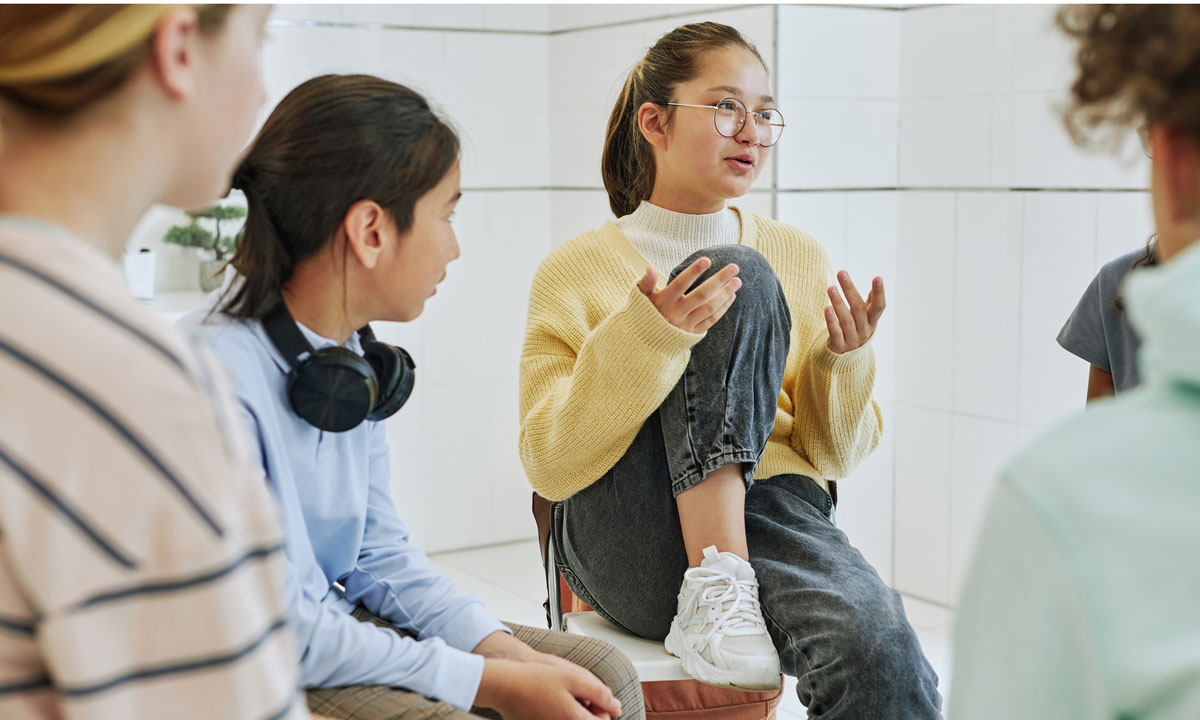Nebraska Civil Rights Panel Examines COVID-19 Impacts on Youth Mental Health
Nebraska Advisory Committee to the U.S. Commission on Civil Rights hosts its third event regarding the impact of COVID-19 on K-12 education

Get stories like this delivered straight to your inbox. Sign up for The 74 Newsletter
LINCOLN — A Nebraska panel on civil rights continued diving into the effects of COVID-19 on K-12 education Wednesday with a focus on youth mental health.
This was the third public meeting of the Nebraska Advisory Committee to the U.S. Commission on Civil Rights, which is tasked with determining civil rights implications of the COVID-19 pandemic and possible recommendations to the national group. The advisory committee hosted two forums this summer, including a look into e-learning and Nebraska’s digital divide.
Jen Pollock of the Nebraska School Psychologists Association said there is a dramatic national workforce shortage, particularly in education. Still, teachers cannot be expected to be mental health experts.
“They are experts in the content, and that’s what we need them to be,” Pollock said.
Schools could have a tiered system of support, however, which Pollock said includes building safe classroom environments for and positive relationships with students, reinforcing clear and high expectations and adopting rigorous course instruction.
‘There’s never too many adults’
Liesel Hogan, a licensed mental health practitioner who works in Educational Service Unit #3 with Pollock, said the impacts of shortages have direct student impacts. ESU #3 is Nebraska’s largest ESU, serving 18 school districts.
Schools require relationships, and trust and rapport among students and teachers are vital, Hogan added. If relationships don’t exist, students are less successful, and teachers can instead come to feel like “glorified babysitters,” according to Hogan.
“I always say that there’s never too many adults who can love a student in order to get them back to where they need to be from a functioning standpoint,” Hogan said.
The pandemic also led to more anxiety, more school absences and a fear of the unknown, with fewer students wanting to learn to drive or leave home for social interactions. Many students feel a lack of motivation, she said, because many activities were halted during the pandemic.
“An object in motion stays in motion,” Hogan said.
Increase in mental, behavioral concerns
Corey Lieneman, assistant professor in the University of Nebraska Medical Center Department of Psychiatry, said that since COVID-19, there has been a 25% increase globally in anxiety and depression.
Nationwide, about 20% of youths ages 3-17 have at least one mental or behavioral health disorder, and suicide is the second leading cause of death in children ages 10-14, Lieneman said. The rate of suicide among children ages 12-17 more than doubled from 2008 to 2020.
Brenda Bassingthwaite, associate professor at UNMC’s Munroe-Meyer Institute for Genetics and Rehabilitation, said each year has become progressively harder to consult in school settings.
This is because as students’ needs go unaddressed, new skills are harder for them to develop, Bassingthwaite said, and students instead adopt maladaptive behaviors such as destroying items or climbing on tables to gain attention or access to other opportunities.
“When we do not meet the needs of students early, the needs often grow and become more challenging to address,” she added.
Workforce shortages can lead to closing classrooms. Omaha Public Schools transferred children with special education needs to different schools this year because of a shortage of special education teachers at three buildings. While there may be no other options, Bassingthwaite said, there will still be an impact on students.
Information overload
There’s also information overload for adolescents, Lieneman said, whose brains are not yet developed to the point where they can absorb all the information presented to them.
For example, students could not fully understand the technological implications during the pandemic or understand the virus itself, said Lestina Saul-Merdassi, behavioral health counselor, youth program director and certified advocate at the Nebraska Urban Indian Health Coalition.
The increase in technological use, fast-tracked by COVID-19, can also be concerning, Lieneman said. She noted that her child in middle school will have nearly 20 courses in the calendar year and most, if not all, have an online component with numerous links per class.
Lieneman offered some solutions to simplify education, such as:
- Eliminating or reducing some homework.
- Starting school later in the day.
- Increasing recreational and social opportunities.
- Reducing technology use.
- Setting developmentally appropriate expectations.
- Prioritizing sleep, healthy eating and physical activity.
Despite the challenges, Lieneman said, all panelists spoke on similar topics, suggesting a unified goal to improve student and teacher outcomes.
“It’s reassuring to know that we’re all kind of seeing the same things, and that helps me feel like we’re on a team,” Lieneman told the group, “and we’re going to be able to accomplish something together as a state.”
Members of the public can provide written comments to the Nebraska Advisory Committee before members forward a report to the U.S. Commission on Civil Rights. Comments can be sent to Victoria Moreno at vmoreno@usccr.gov no later than Dec. 8.
Nebraska Examiner is part of States Newsroom, a network of news bureaus supported by grants and a coalition of donors as a 501c(3) public charity. Nebraska Examiner maintains editorial independence. Contact Editor Cate Folsom for questions: info@nebraskaexaminer.com. Follow Nebraska Examiner on Facebook and Twitter.
Get stories like these delivered straight to your inbox. Sign up for The 74 Newsletter

;)